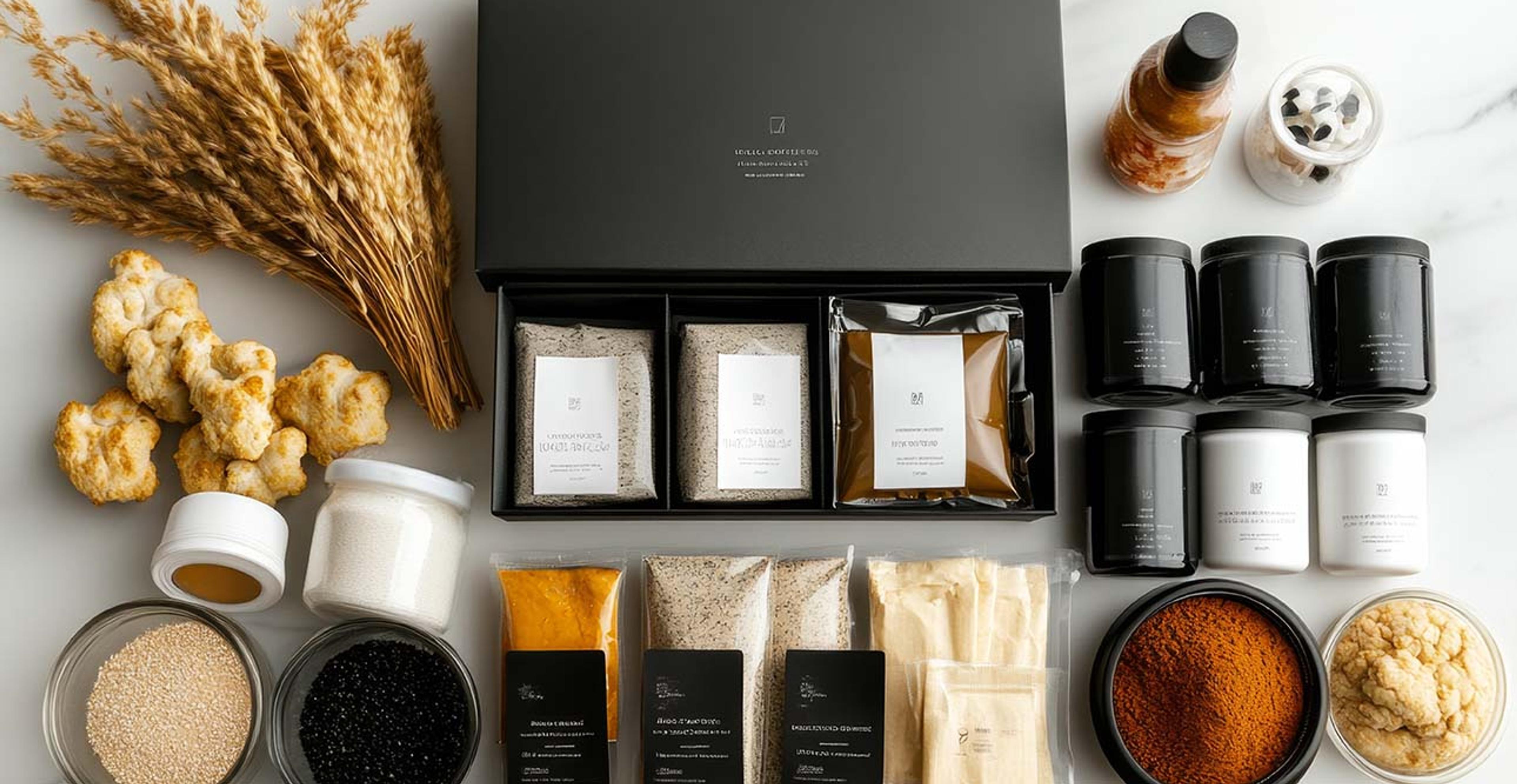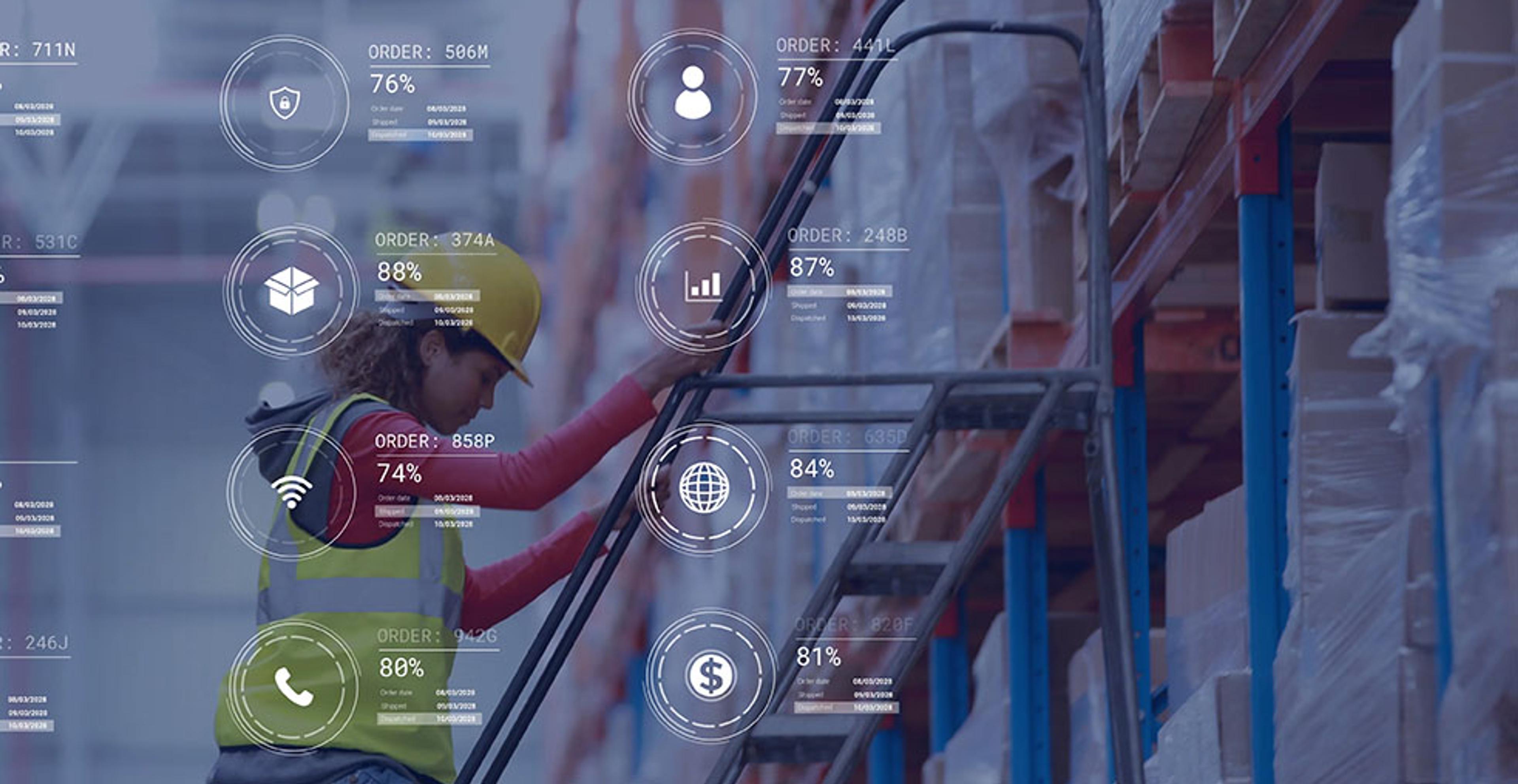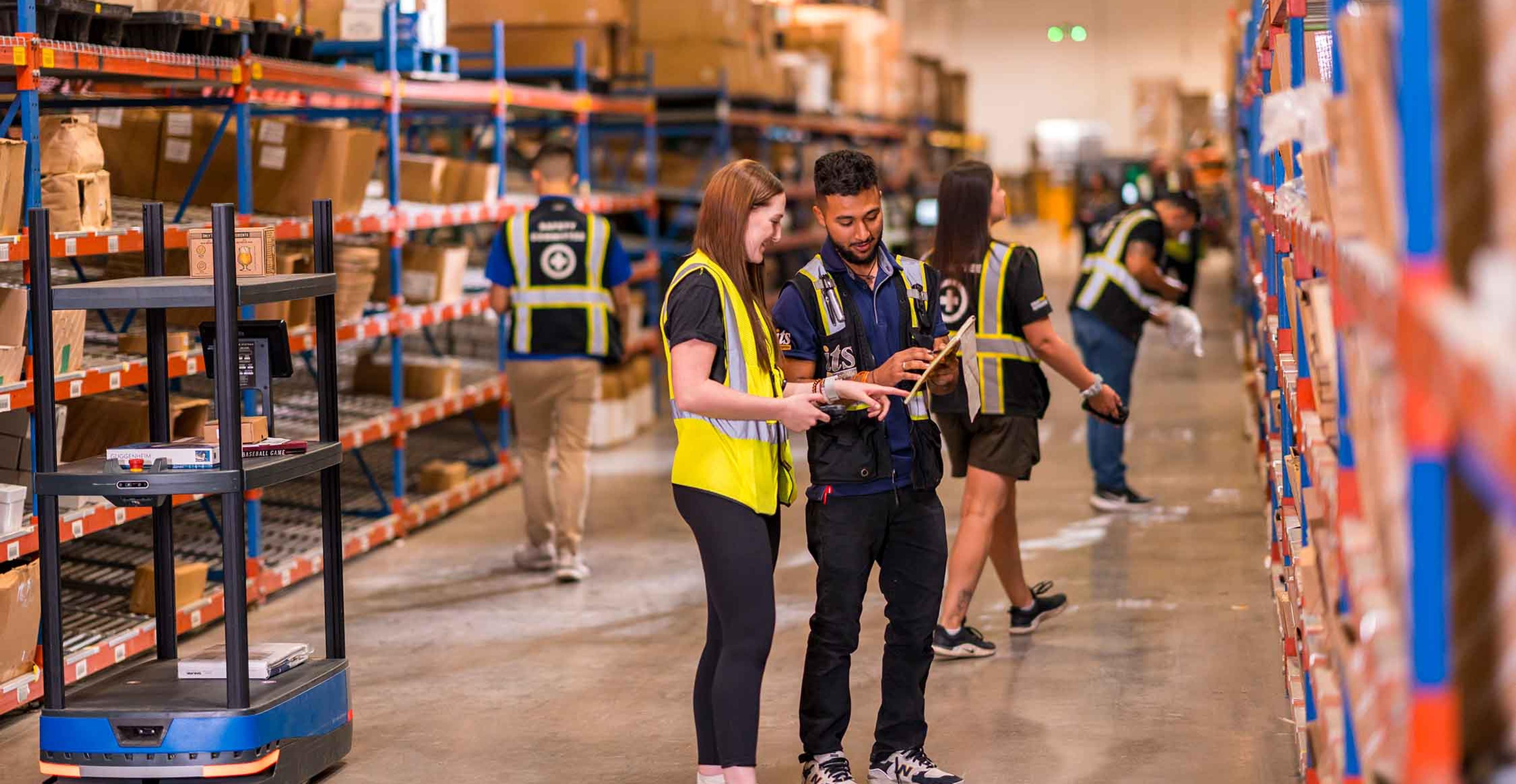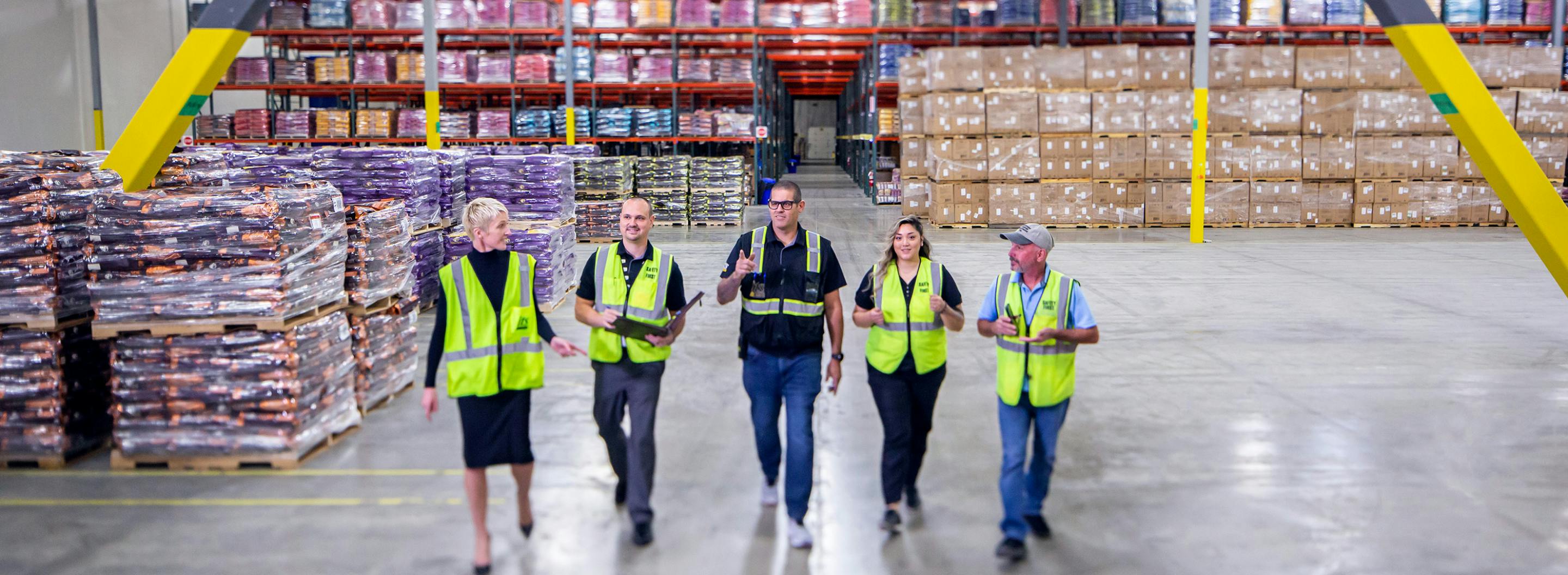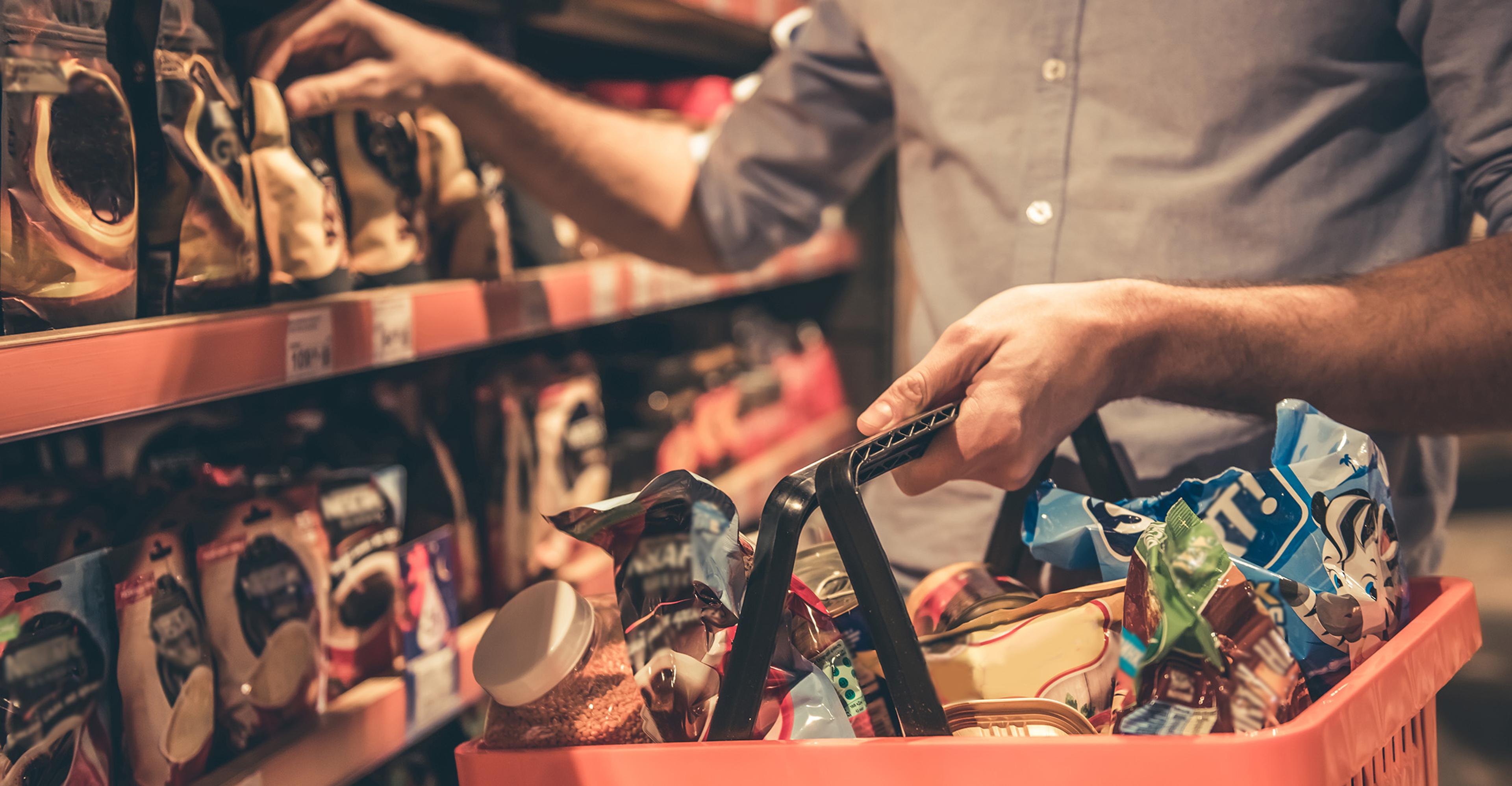
What does it mean to be a Food Grade Warehouse?
The term “food grade” refers to materials, supplies, and equipment that are safe to come into contact with food. This means that they are non-toxic and will not leach harmful chemicals into food products. They are also designed and constructed to prevent food contamination. Any food storage facility that houses food products must follow strict Food and Drug Administration (FDA) standards. These standards require a higher level of cleanliness both inside and outside the facility. These precautions must be taken to avoid cross-contamination. The most common types of food warehouses are dry storage, cold storage, and frozen storage. Kasia Wenker, Director of Supply Chain Solutions and Todd Huber, General Campus Manager, provide their valuable insights into why relying on more than just a food grade warehouse is essential for maintaining a successful food ecommerce business.
Food Grade Distribution: Beyond the Warehouse to Food Ecommerce
When entering the food ecommerce market, ensuring product safety and quality is essential. Wenker states, “Having a food grade certification is a significant step in the right direction. However, it is often not enough to meet the specific requirements of the ecommerce industry”. Here are some key factors to consider when evaluating a third-party logistics (3PL) provider for your food ecommerce business:
- Look for a 3PL that has fulfillment experience in the food ecommerce industry. Learn how Nature’s Bakery found a logistics partner to specialize in ecommerce and food storage. In turn this helped them focus on making their delicious products.
- Choose a 3PL provider with advanced inventory management systems capable of tracking individual units, expiration dates, and lot numbers accurately.
- The 3PL should use up-to-date technology to track your food items and ensure their traceability.
- Evaluate the 3PL’s recall procedures and capabilities. Can they systematically recall individual units, trace production numbers, and notify affected customers promptly in case of a product recall.
When venturing into food ecommerce, prioritizing product safety and quality is key. As Kasia Wenker suggests, relying solely on a food grade certification may not suffice. Therefore, choosing a 3PL partner with experience in food ecommerce, advanced inventory systems and effective recall procedures becomes critical. By making this informed choice, you can navigate the complexities of the industry and ensure top-quality products for your customers.
Is AIB Certification Enough for Food Ecommerce Distribution?
The American Institute of Baking (AIB) is a regulatory body that conducts food facility inspections. AIB assigns scores to assess compliance with industry standards. While AIB certification is valuable, it’s essential to determine whether it suffices for food ecommerce distribution. AIB certification focuses on facility cleanliness and adherence to industry standards. However, this may not encompass all the essential aspects required for successful food ecommerce distribution. For example, AIB certification does not require businesses to have a system in place to track the expiration dates of their products. This is a critical requirement for food ecommerce Businesses need to be able to ensure that they are not shipping out products that have expired.
Wenker states that “to excel in food ecommerce, businesses need more than just AIB certification. They must leverage technology for critical functions such as lot capture, recall management, lot lifecycle tracking, and expiration date monitoring.” She also states that “your system should have the capability to alert you when a product is nearing its expiration date.” This technology-driven approach is important for efficient inventory management in food ecommerce. Food ecommerce often involves specific inventory management strategies like “first in, first out” (FIFO) or “first expiration day, first out” (FEDO). By leveraging technology and best practices tailored to ecommerce, businesses can ensure robust traceability, safety, and customer satisfaction. This will help them to excel in the food ecommerce sector.
Kitting in Food Ecommerce: Managing Mixed Products
Kitting is the process of combining individual items to create new product bundles or packages. This offers businesses a means to diversify their product offerings and cater to varying customer preferences. Wenker mentions, while kitting has the potential to bring added value, it’s important to acknowledge the operational challenges it presents. These challenges encompass areas like inventory management, tracking, and logistical intricacies, which require thoughtful management to ensure a smooth operation.
Nonetheless, when executed effectively, kitting can become a valuable asset for businesses. This allows them to adapt to market demands and enhance customer satisfaction. Huber states “sample kitting has been on the rise. This offers customers a convenient way to experience a variety of products before committing to larger purchases.” This customer-centric approach improves the shopping experience and empowers consumers to make informed choices. In the changing ecommerce world, adopting kitting as a strategic tool can lead to lasting success and customer loyalty.
Recalls and Automation for Food Ecommerce
Effective inventory management is important for food ecommerce businesses, especially those that sell products with limited shelf life. Choosing the right 3PL is important. The 3PL must carefully track items and lots from arrival to delivery, focusing on expiration dates and lot numbers. This ensures efficient operations and meets rigorous safety standards. Information must be kept for a recalls. If there is a recall the 3pl has a four hour window to gather the information for the customer.” says Huber. This is important because numerous customers may have received the same SKU, especially with individual unit shipments. Thus, the 3PL must efficiently retrieve this data and respond to customer requests.
Individual packages typically lack extensive product information. Huber states, “products should be assigned unique identifiers when moved from backstock to the pick line. This helps track where the products are going.” When inventory runs down to zero, the 3PL should introduce a different lot or expiration date into the pick line to prevent confusion. This tracking system relies on custom technology and is highly automated. When replenishment is needed, the system triggers the process when inventory reaches zero in the bins. This approach is unique, as it deviates from the usual practice of maintaining a set inventory percentage to prevent total depletion.
Why ITS is a Good Choice for Food Ecommerce
ITS is a leading provider of third-party logistics (3PL) services in based on the West Coast. ITS offers a variety of supply chain services, including warehousing, distribution, transportation, and fulfillment. With a total distribution network of over 3.8 million square feet across North America, ITS is AIB certified and has a strong commitment to food safety.
Some of the benefits that ITS offers to food ecommerce businesses include:
- ITS has over 20 years of experience in the food ecommerce industry.
- ITS has maintains an EXCELLENT rating on yearly AIB international inspections for the past 11 years.
- Employing cutting-edge technology, they track products to ensure their traceability. This not only aids in meeting food safety regulations but also aligns with customer expectations.
- ITS is committed to providing excellent customer service. They are always available to answer questions and help businesses with their needs.
